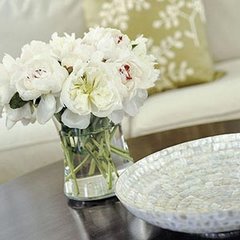 You don’t have to be looking at your feet to take notice of a floor. Your choice of flooring makes up substantive part of your home’s decor.
You don’t have to be looking at your feet to take notice of a floor. Your choice of flooring makes up substantive part of your home’s decor. Appearance and durability are usually the key issues in flooring considerations, but comfort ought to be a priority as well. For most homebuyers or homeowners, cost must also play a major part in choosing the material. You have five basic categories of flooring to choose from: wood, laminate resilient, concrete and tile.
Hardwood floors may be the most appealing type of flooring for your home. It offers a very natural look and comes in a variety of colors.
Laminate floors have come in a variety of wood-grain patterns, and they are easier to keep clean than wood floors.
Resilient flooring remains a perennial favorite for kitchen floors because of its durability and low maintenance.
Stone offers incomparable beauty for floor that only nature can create. It is ideal for people with allergies who want to avoid carpet.
Concrete in recent years has become an extremely popular choice for countertops and floors. It highly durable and there are no allergens or grout to clean. The cool feel of the floors is also a welcome respite during triple digit temperatures.
Tiles floor are look like stone, but they are easier to maintain, they don’t require a sealant. There’s also huge variation in color and texture.
Choose carefully, have one that fits your lifestyle.





